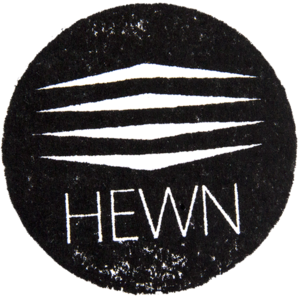Frequently Asked Questions
+ Are the utensils treated?
Yes. They are treated with cold pressed linseed oil. The mixture is heated and all utensils are soaked in it until they are more-or-less saturated with oil. This prevents the wood from soaking up liquids.
+ Are they meant for eating with?
Yes! All the utensils, including the eating spoons are intended to be used. They are carefully designed in order to work well and last a long time, even with heavy use. For instance, I spend a lot of time on the bowls of the eating spoons to make sure they will feel good in your hand and your mouth! Wooden things develop a nice patina over time, becoming even nicer with use and age.
+ How should I wash them?
You can safely wash your wooden utensil with hot soapy water. I use and wash mine every day. Linseed oil (and of course beeswax) sets hard over time. It is then resistant to being washed out of the wood. I would avoid soaking them in water for long periods though because they will eventually soak it up. If left sitting in water for a long period of time, the wood may develop mildew.
+ Are they dishwasher safe?
Not really. I wouldn't recommend it. While more robust utensils such as cooking spoons may survive the dishwasher relatively well, putting your spoons in the dishwasher will dramatically expedite the removal of the oils from your spoon. Repeated drying cycles could even cause cracking. In any case, they will probably get a bit banged up which, in the case of a finely carved eating spoon for example, would be a bit of a shame in my opinion.
+ Do they need to be re-oiled?
Not really. After treatment, wooden spoons can be used for a very long time without re-oiling, perhaps for ever. Your spoon will dry out over time however. If you want to return your spoon to its origninal shine, you can oil it occasionally with walnut oil or linseed oil if you have it. Unlike vegetable oil or olive oil, these oils will harden as they cure and will not become rancid.
To re-oil simply rub the oil in with your fingers - your body heat will help it to penetrate the wood.
Note: Flax seed oil is another name for linseed oil and is usually how it is referred to in wholefood shops where it is often sold as a food supplement.
+ Are they hygienic to use?
Yes. I hardly use steel cutlery at all anymore. They've been used for thousands of years and it's not so long ago that everyone but the very wealthy would have been using wooden cutlery and bowls. For more information, read my blog post about wood hygiene.
+ How long does it take to dry the wood before you can carve it?
No time at all. The wood is carved 'green', completely unseasoned or partly seasoned. To understand why, you can read my blog post entitled What is Green Woodworking?.
+ Where does the wood come from?
Various places but mostly from friends and neighbours. I collect wind-blown branches, pruned cuttings, and occasional storm-fall. I generally keep my eyes open for wood that doesn't have a home.
+ Which is your favourite wood to use?
I like birch and cherry a lot. Any fruitwood is excellent but it's usually fairly hard to come by. Sycamore was traditionally used for kitchenware because it is virtually odourless and tasteless. It's also very common and has a lovely creamy white colour! Most hardwoods can be used.
+ How do you keep your tools sharp?
Whetstones! To receive a sharpening kit anlearn how to sharpen your own knives using a whetstone, join an online class.
+ What does your maker's mark/logo mean?
When I began sending my work off into the world, never to be seen by me again, I started to sign it with a version of the Ogham letter 'E', my first initial (here's an example). Ogham is an ancient Irish alphabet (look it up, it's very interesting!). It's also associated with trees, sometimes being called the tree alphabet because many of letters were named after trees in old Irish. The logo is inspired by the signature.
+ How do you finish your spoons?
I prefer not to sand my products. Final carving of all my spoons is done using a very sharp knife. I rely on my skill and the sharpness of my knife to achieve a smooth, yet slightly faceted surface. I like the feel and look of the tool marks and I believe the 'off-the-knife' finish is more robust and longer-lasting than a sanded finish, especially when subjected to daily washing.
